Back to Main Market Square to start the day (this photo provided under free license Wiki, it appears to have been taken from the basilica towers):
ByJorgeLascar, https://commons.wikimedia.org/wiki/File:Sukiennice_and_Main_Market_Square_Krakow_Poland.JPG
Resized, otherwise original content
Resized, otherwise original content
The Main Square is the principal urban space located at the center of the city, dates back to the 13th century, and at 3.79 ha (9.4 acres) is the largest medieval town square in Europe. The Project for Public Spaces (PPS) lists the square as the best public space in Europe due to its lively street life.
The Main Square is a square space surrounded by historic townhouses and churches. The center of the square is dominated by the Cloth Hall (Sukiennice), rebuilt in 1555 in the Renaissance style, topped by a beautiful attic or Polish parapet decorated with carved masks. On one side of the cloth hall is the Town Hall Tower (Wieża ratuszowa), on the other the 11th century Church of St. Adalbert and 1898 Adam Mickiewicz Monument. Rising above the square are the Gothic towers of St. Mary's Basilica (Kościół Mariacki). Kraków Main Square does not have a town hall, as it has not survived to the present day.
The Main Square is a square space surrounded by historic townhouses and churches. The center of the square is dominated by the Cloth Hall (Sukiennice), rebuilt in 1555 in the Renaissance style, topped by a beautiful attic or Polish parapet decorated with carved masks. On one side of the cloth hall is the Town Hall Tower (Wieża ratuszowa), on the other the 11th century Church of St. Adalbert and 1898 Adam Mickiewicz Monument. Rising above the square are the Gothic towers of St. Mary's Basilica (Kościół Mariacki). Kraków Main Square does not have a town hall, as it has not survived to the present day.
We then toured the Rynek Underground museum below the market square of the city. Work on the museum first began in 2009 with a budget of 38 million zlotys, about 4 million US. The museum was opened on September 24th, 2010. The main exhibit, “In the footsteps of Krakow’s European identity”, uses holograms, alongside fog machines and screens to recreate the atmosphere of Kraków 700 years ago.
The museum's overhead footprint is shown in orange below - we toured the broad colored area at the center.
Here are remains of original waterwork control structures.
Not original, but showing a recreated hand-cart of the era.
The museum, although underground, was laid out with nice spaces.
Original burials.
A model of Krakow from medieval times. Plexiglass walls protect he model, open at the top, so people have "donated" coins by tossing them over.
700 year old cart path cobbles.
We're back on the square - the museum we just toured is right below us. The church is Saint Mary's Basilica, a brick Gothic church built in the 14th century.
We continue our downtown tour seeing more medieval stuff...
...and horse drawn carriages.
Preserved/restored portion of original city protective wall.
The Kraków Barbican, from 1498 – a fortified outpost once connected to the city walls and a historic gateway leading into the Old Town. The barbican is one of the few remaining relics of the complex network of fortifications and defensive barriers that once encircled the royal city.
We're at the top of the map now. Note the "Planty" - it encircles the Stare Miasto (Old Town), where the Medieval city walls used to stand until the early 19th century. Other cities we've toured that had old city walls removed, were replaced with subsequent structures/streets - this transformation created a very nice extensive city park. We're making our way to Wawel Hill, at the bottom.
Unveiled in November 2013, this monument pays homage to one of Poland's greatest painters, and one of Kraków's most beloved sons: Jan Matejko (1838-1893). 2013 was not only the 175th anniversary of Matejko's birth in Kraków, but also the 120th anniversary of his death here. Famous for his epic and outsized historical paintings, which have been reproduced enough to become imprinted within the national psyche.
The Grunwald Monument is an equestrian statue of King of Poland Władysław II Jagiełło (1352–1434) located at Matejko Square and constructed in 1910 to commemorate the 500th anniversary of the Battle of Grunwald. It was destroyed in 1939 by Nazis and reconstructed in 1976.
Time for some Polish fast food - we've been seeing these along our walk - time to get one - it's pretty tasty, like a deli sandwich in the form of a french bread pizza.
A relic of medieval punishment - a neck iron.
...and back to the square!
Just in time to a top-of-the-hour bugling - there's a story behind this event: https://theculturetrip.com/europe/poland/articles/the-amazing-story-behind-krakows-bugle-call/
- it always ends very abruptly according to tradition. See the bugle horn at the window below:
- it always ends very abruptly according to tradition. See the bugle horn at the window below:
The Clothe Hall and tower is seen again as we pass by.
The Church of St. Adalbert or the Church of St. Wojciech, located on the intersection of the Main Market Square and Grodzka Street, is one of the oldest stone churches in Poland. Its almost 1000-year-old history goes back to the beginning of the Polish Romanesque architecture of the early Middle Ages.
Another bronze model for the blind.
The Collegium Maius is the Jagiellonian University's oldest building, dating back to the 14th century, standing at the corner of ulica Jagiellońska(Jagiellon Street) and ulica Świętej Anny (St. Anne Street). In the 1490s Nicolaus Copernicus studied here, and became the Renaissance astronomer and polymath who would revolutionize European ideas about the universe.
An afternoon break for cake and hot chocolate.
The Church of St. Francis of Assisi with Monastery of the Franciscan Order is a Roman Catholic religious complex on the west side of All Saints Square at Franciszkańska 2, across the street from the Bishop's Palace – residence of Pope John Paul II during his stays in the city. The Church dates back to the 13th century.
A model of the church:
...and now inside.
A re-creation of the Shroud of Turin - since it was put in contact with the original, it also is now considered a sacred relic.
Here's a placard of where Pope John Paul II liked to sit, near the back of the church, mostly from the time of his Polish Archbishop position.
Tim tries out the spot.
Cinderella approaches...
Indeed, the city is lively...
The Poles do love their sweets - they have them quite often with every meal - we saved the calories for beer.
A classic "Milk Bar" - in the times of Communism, in a show of taking care of the people, the government provided simple subsidized public eating places, apparently the now freer people still enjoy the tradition, although these places are now private enterprises.
Gerri enjoys her Borscht, cold beet soup, in memory of her Grandma - just under $3US.
Onto Wawel Hill, the most historically and culturally significant site in Poland. Central to it is a castle - a fortified residency on the Vistula River established during the 13th and 14th centuries on the orders of King Casimir III the Great and enlarged over the centuries into a number of structures around an Italian-styled courtyard. It represents nearly all European architectural styles of the Medieval, Renaissance and Baroque periods.
Remains of some of the oldest parts of the hill.
A mysteriously significant spot - people come here to do horoscope-like stuff with shamans (or charlatans?). It matters not what others think, if their convictions feel real.
Cruising on the Vistula River.
The tour winds down, time to find the beer spots.



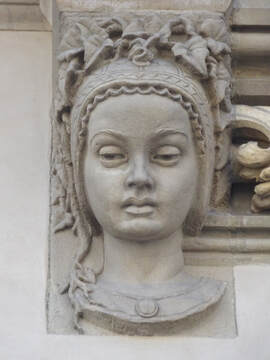






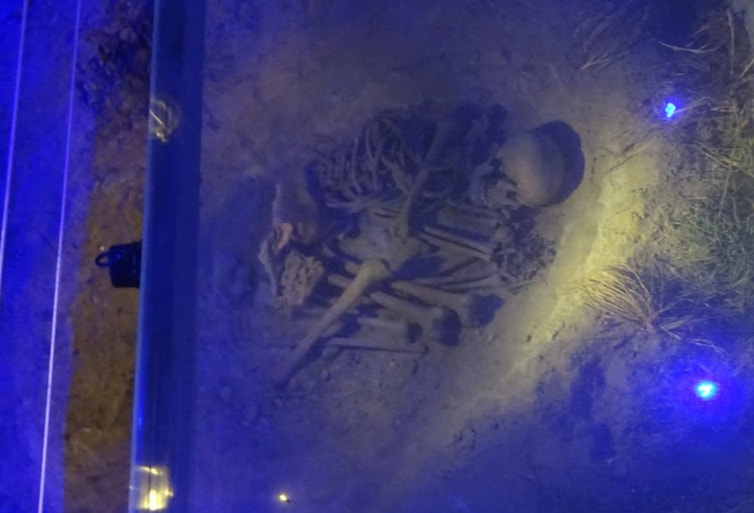










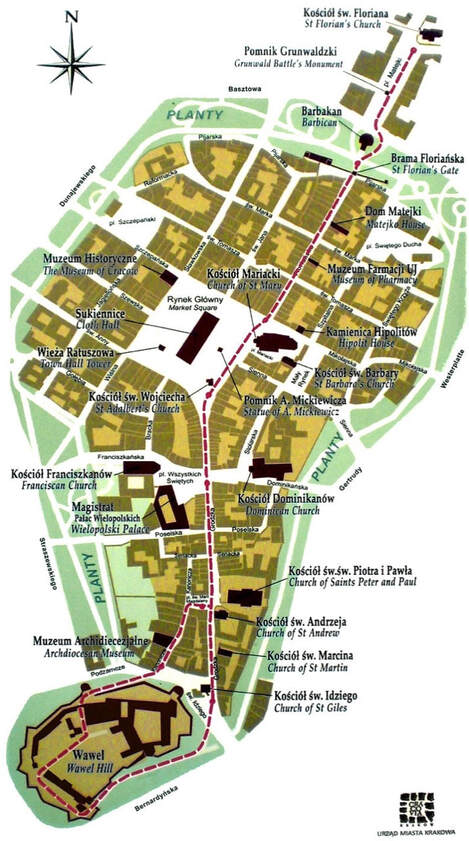
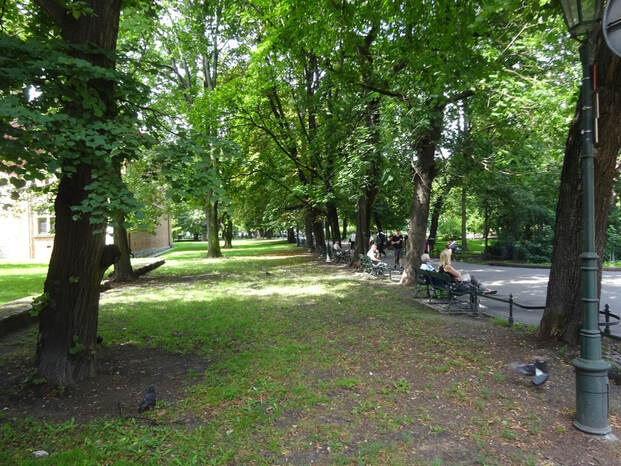




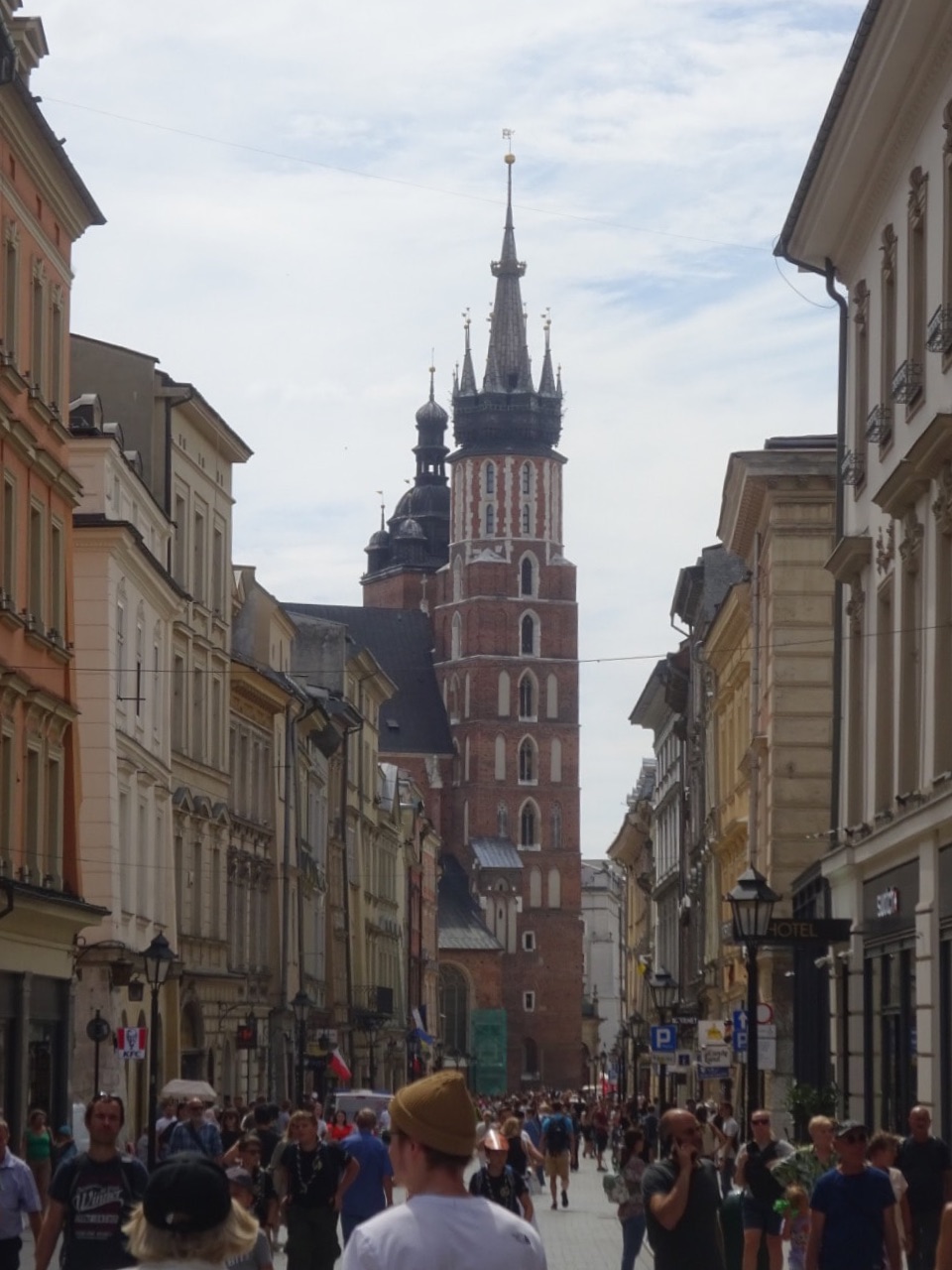
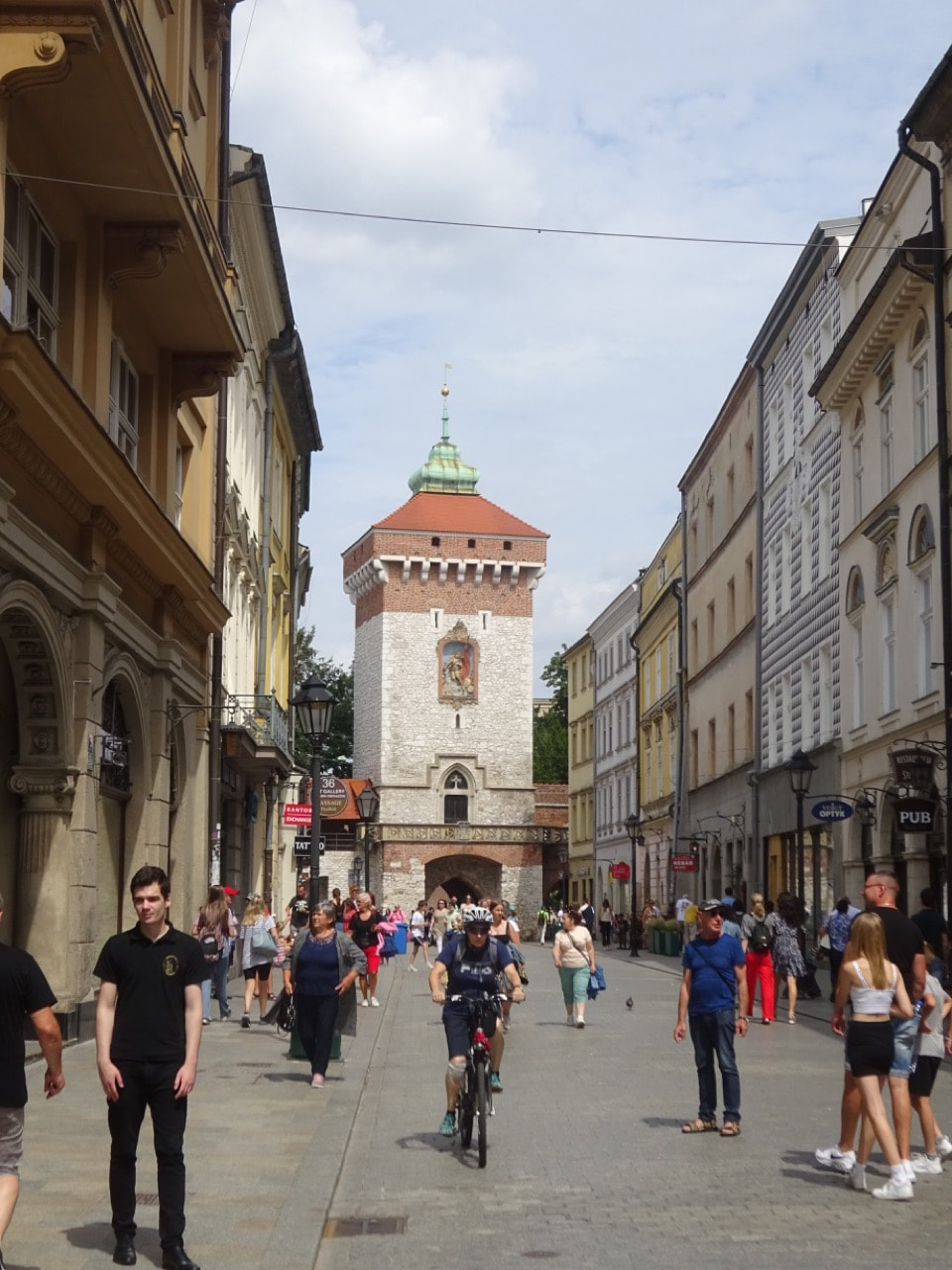





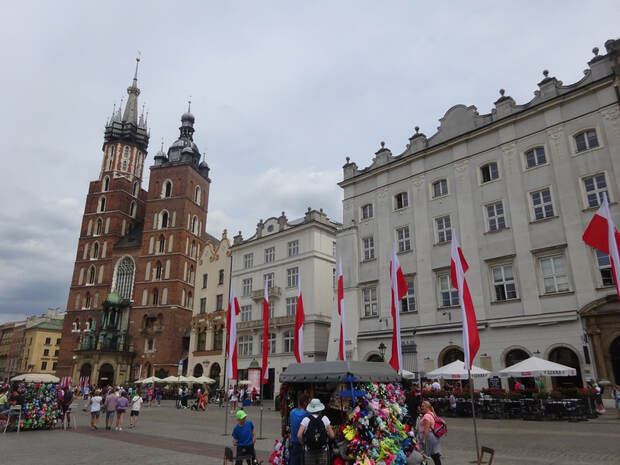





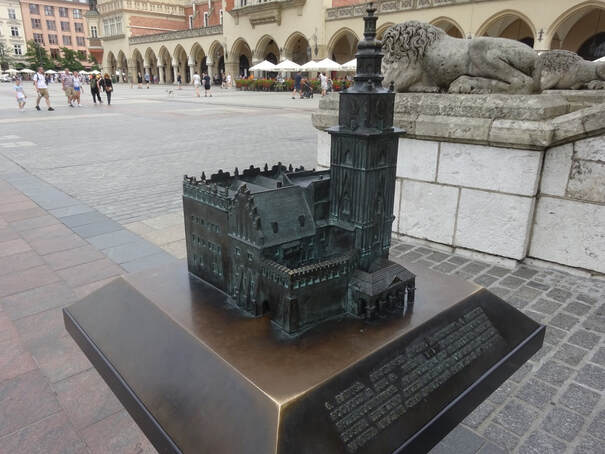






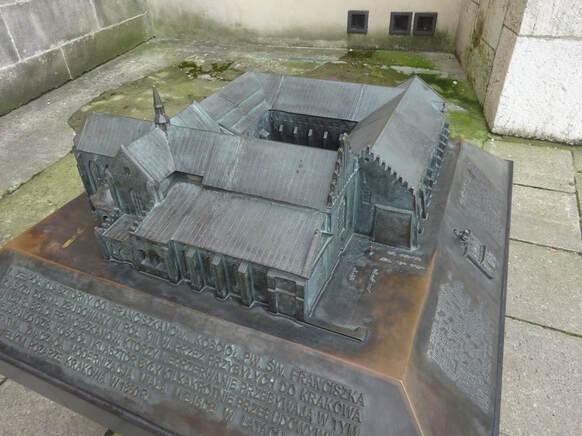












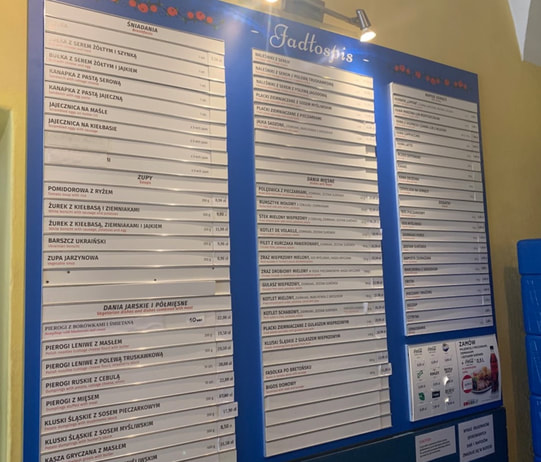


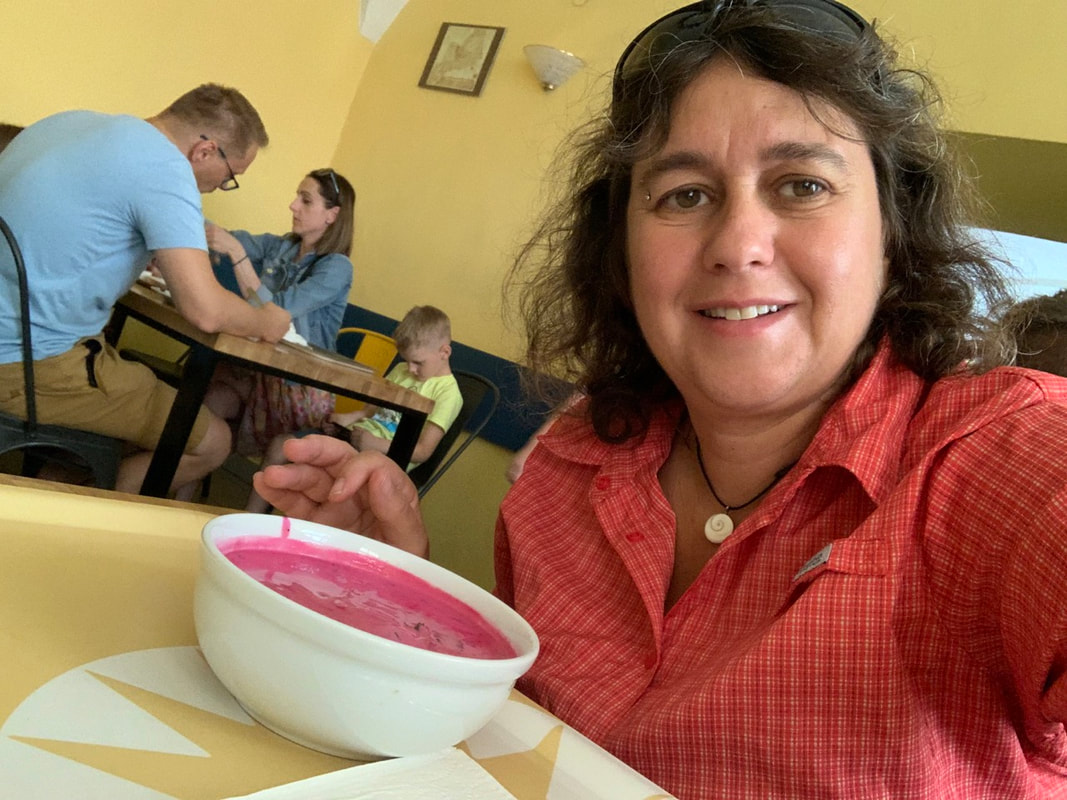







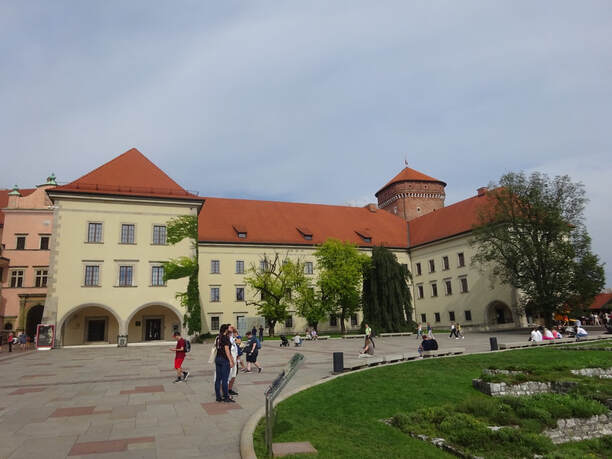


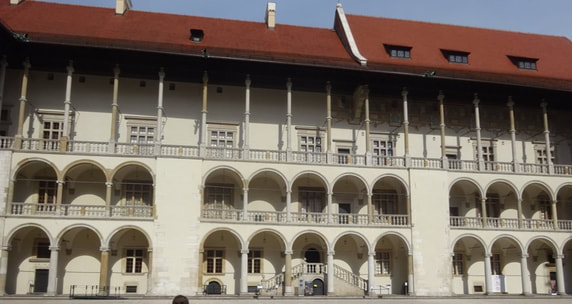



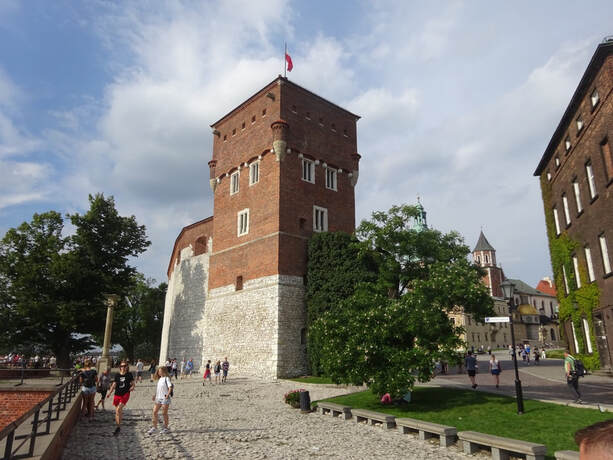


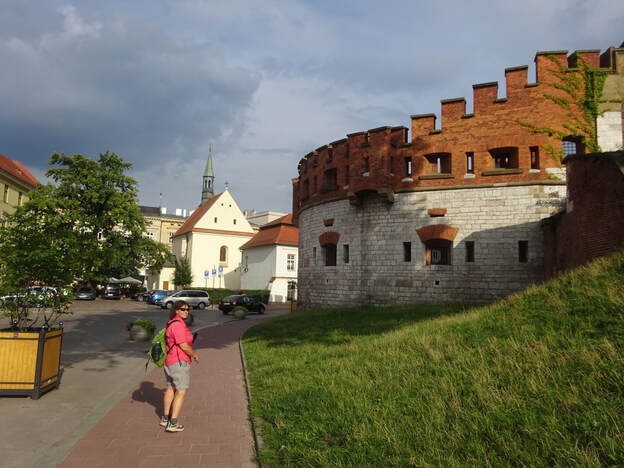
 RSS Feed
RSS Feed
